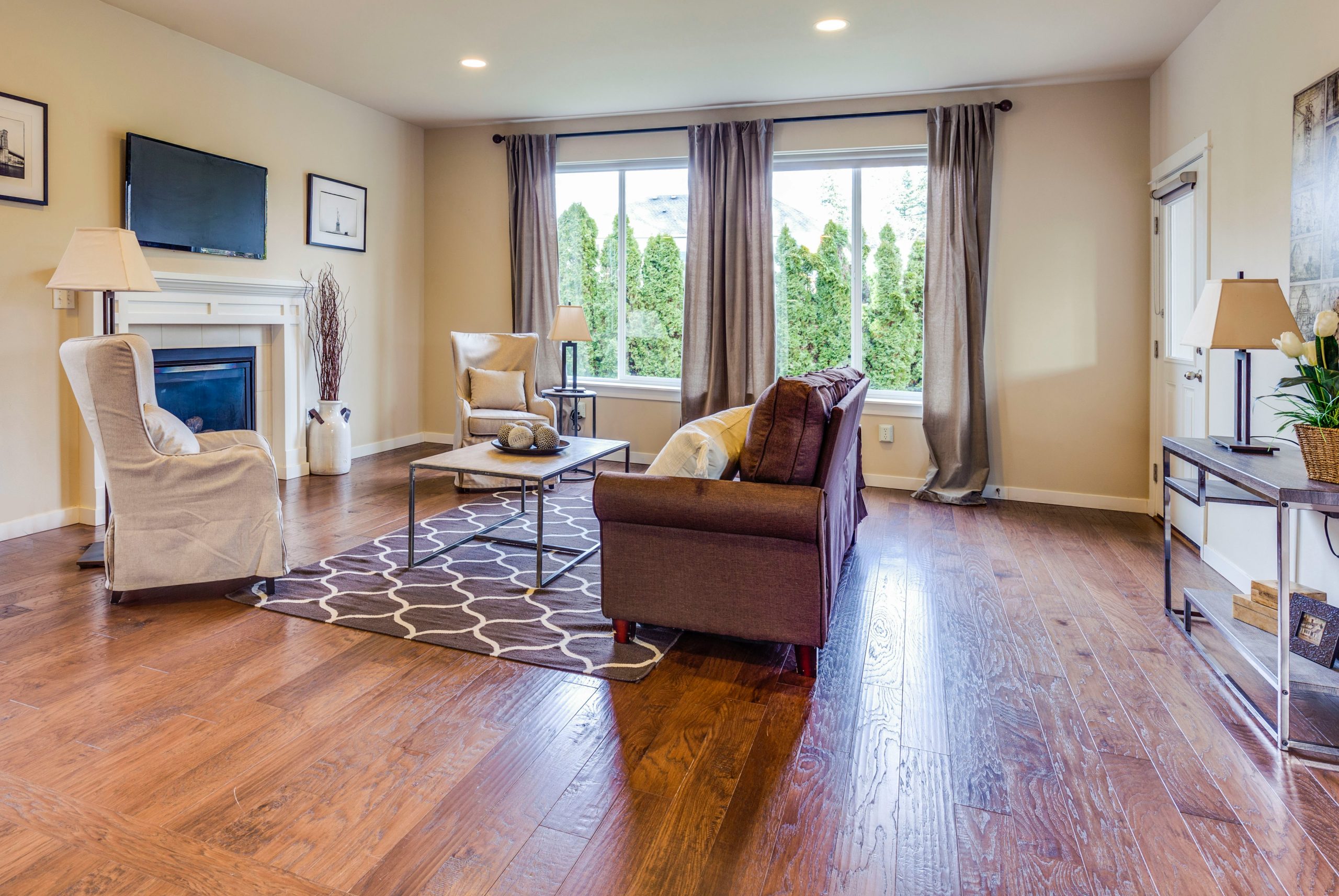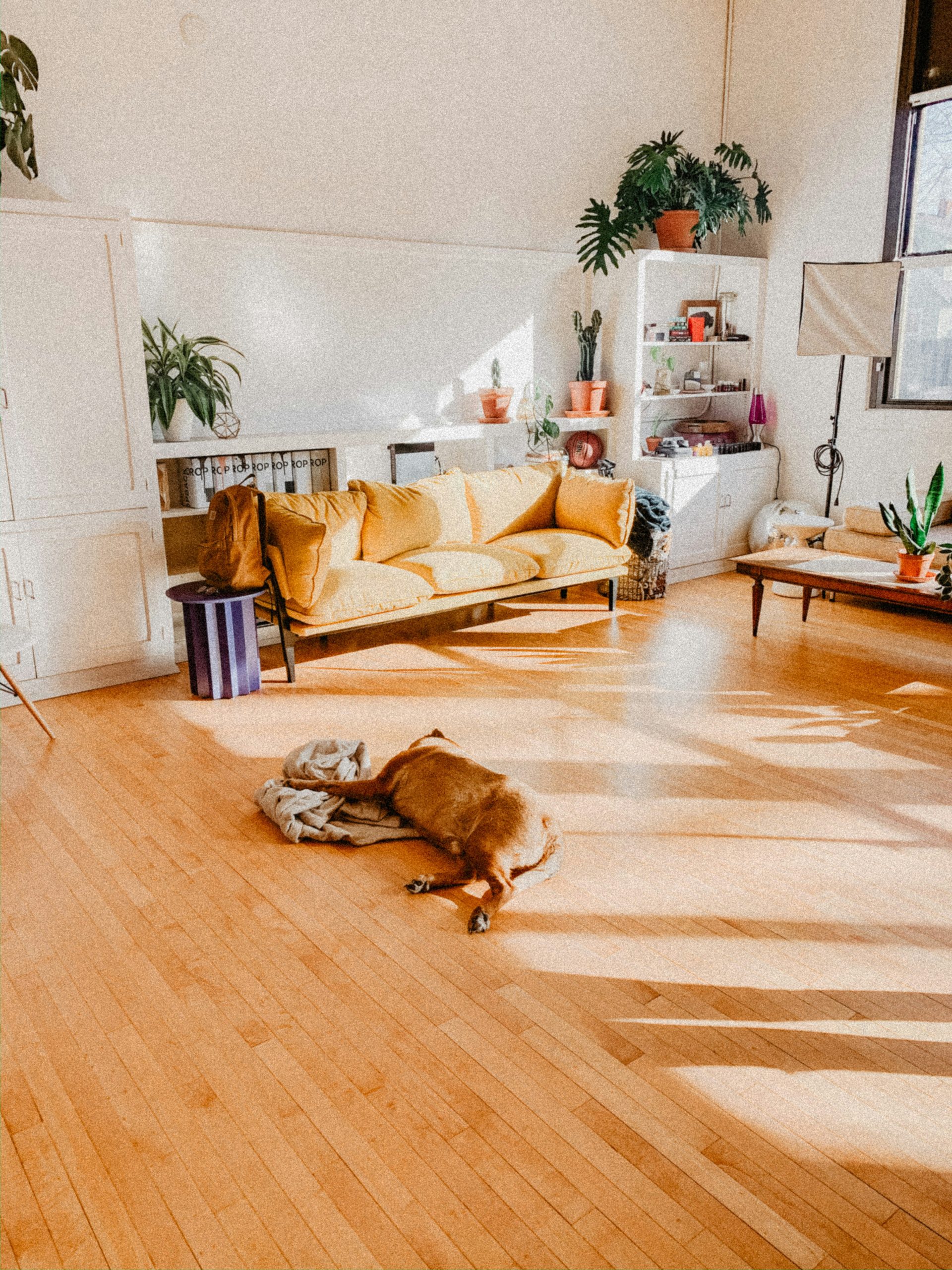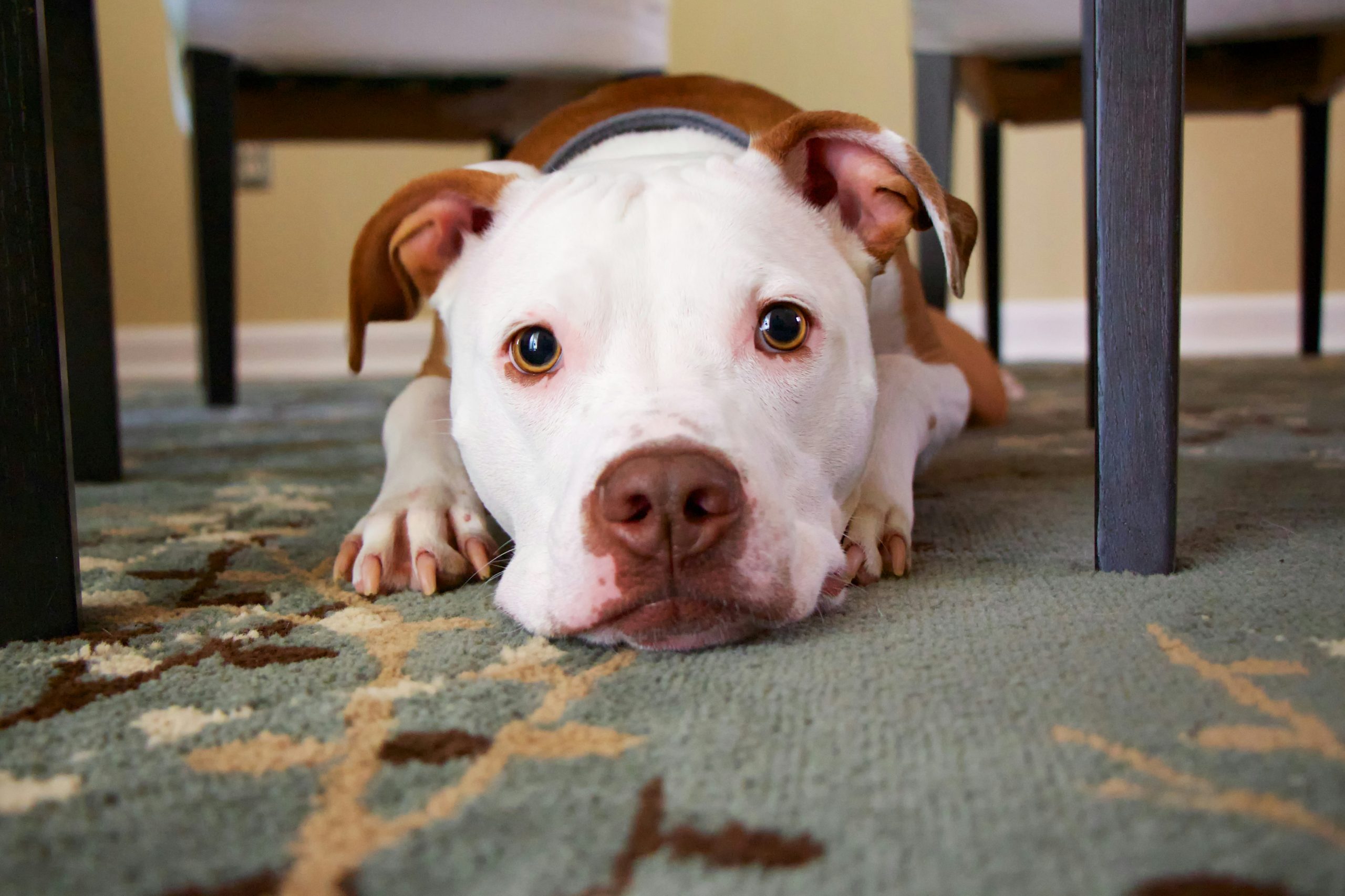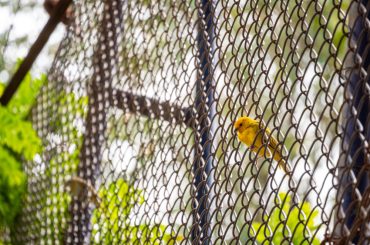Table of Contents
With any home interior project, we often consider not only cost and style, but also how practical it will be for those who benefit from it. Flooring is one such area we take considerable care over choosing.
If we have small children, we want it to be as slip-resistant, durable, and safe as possible. If we have pets, we want much the same, but also perhaps with the bonus of it being resistant to liquid should there be any accidents in the room.
In this blog, we look at flooring in the home and what type you should consider if dogs make up part of your family.
Stats released in Jan 2024 indicate that 31% of UK households have a dog as a pet, making it, by far, the most common pet in the country. As a result, much time and money is spent on making sure the four-legged friends feel just as at home as you do.
We looked at a variety of living room flooring types you could invest in to see how they match up to not only your dog’s needs, but also your budget and your expectations.
What Flooring Is the Best for Dogs?
If you are factoring your dog’s needs as well as your own into your flooring plans, you’ll want to consider a few specific criteria for the flooring types. You’ll need it to be durable, easy to maintain, affordable, water-resistant, and scratch-resistant. Of course, many flooring types may offer excellent water resistance but are incredibly expensive.
Others may be easy to maintain but scratch easily. With that in mind, we chose the most popular flooring types for your living room (as that is where your dog may be the most!) and judged them on their merits.
Cork
It is perhaps unlikely you will choose to use cork flooring in your living room, but its natural resistance to mould and mildew makes it handy for areas that may encounter a little more moisture than normal.
Ticking many boxes for green credentials, cork flooring can be a viable option for your living room. It just isn’t the cheapest, and if spillages are left, it can be damaged quickly. Maintenance-wise, it is a fairly straightforward floor type to clean.
Engineered Hardwood

A natural wood floor creates a beautiful look in the living room, but it struggles to match the demands likely to be put upon it. That is why people look to engineered hardwood instead.
Replicating the look of genuine hardwood flooring, it delivers something visually stunning as well as something that lasts considerably longer than a natural wood flooring equivalent.
With a wide range of colours, patterns and finishes, it can suit almost any room style. You just have to be wary of scratches and spillages as it doesn’t cope with them too well. That being said, there are a range of products available to treat these floors to help protect them from such damage.
Luxury Vinyl Tile

Luxury Vinyl Tile or LVT flooring is another popular choice. With styles replicating stone, tile, or wood, you can furnish your living room in a design you prefer without having to spend excessively to make it happen. Add in its easy clean nature, its affordability and its water resistance and you have a great option for your dogs to get comfy on.
A further benefit, and one particularly appealing to dog owners, is its high level of scratch resistance. Thanks to this, there is little need for replacing any of your floor, and if you ever do need to, each tile can simply snap out and be replaced with another.
Laminate
Laminate flooring is universally popular. Its low cost makes many people adopt it as a flooring choice for living rooms, bathrooms, kitchens and more. However, it does struggle with water resistance.
That being said, laminate flooring does provide high levels of scratch resistance. Perfect when those paws come tapping along the ground! It is also simple to clean too. Laminate flooring, especially the types that exhibit a smoother finish, may not be ideal for your dog, especially if it likes to move quickly around the room.
The polished nature of the surface makes it more of a slip hazard for your canine than necessary!
What Flooring Should You Avoid in Your Living Room if You Have Dogs?
It comes as perhaps no surprise that two flooring types stand out as far from ideal for dogs at home.
Carpet

Most, if not all living rooms are likely to be furnished with carpet, and whilst it provides a great level of durability, adds an extra layer of insulation, and comes in a host of stunning patterns and colours, it does present some problems.
Carpet is more likely to suffer from permanent staining, and where you may be able to remove a piece of LVT and replace it, a carpet sometimes needs the entire surface removed and a new one laid to hide the traces of damage.
The damage isn’t just limited to staining though. The claws that were unable to scratch the LVT or laminate flooring could instead be tearing up pieces of carpet quite quickly.
And lest we forget, a dog can shed lots of hair, and whilst you may not initially see it buried deep within your carpet, it’s almost certainly there and may even have fleas or other pests nestling within it.
Of course, you can purchase specific cleaning materials, that will help, but the extra expense of cleaning up after your dog when you could be playing with it and enjoying your living isn’t always worth it!
Solid Hardwood
Sold hardwood always looks great. It just isn’t a dog’s best friend. It can be scratched easily, and it can warp quite fast once it gets damp.
Your living room is meant to be an area of relaxation for the whole family, including your dog so considering them when planning an interior decorating project should not be forgotten. Of the flooring types we covered, the Luxury Vinyl Tiling appears to present you with the best of each criterion we were looking at.
It’s durable, it handles spills well, it’s easy to clean and it doesn’t cost the earth. However, if your pets are well-behaved, engineered hardwood can also provide you with a great option. Just think twice before deciding on carpet!





